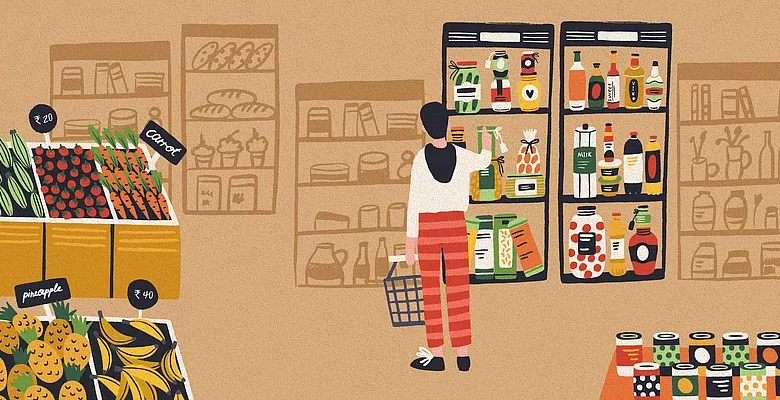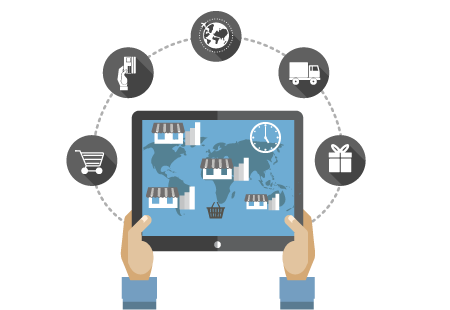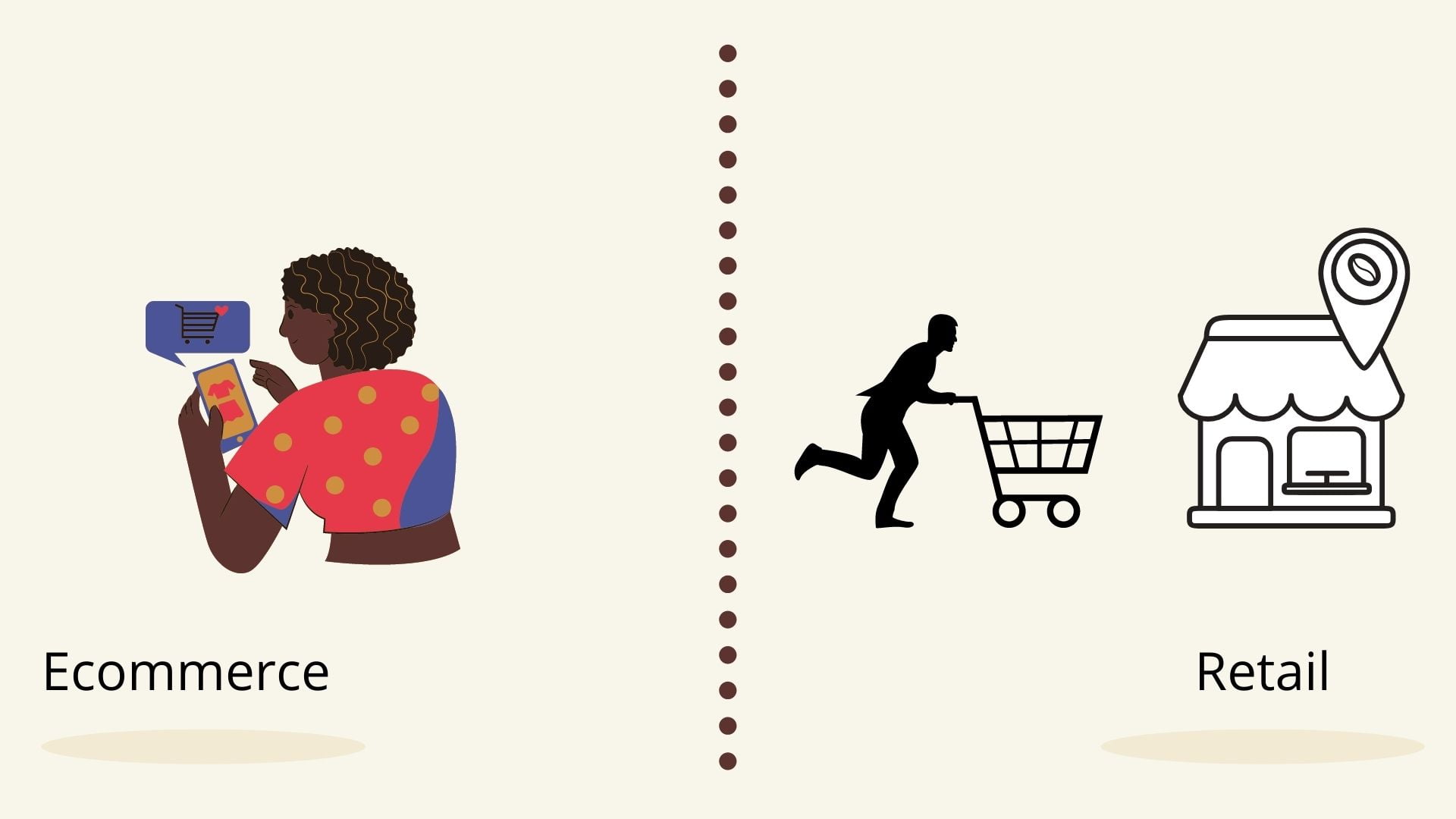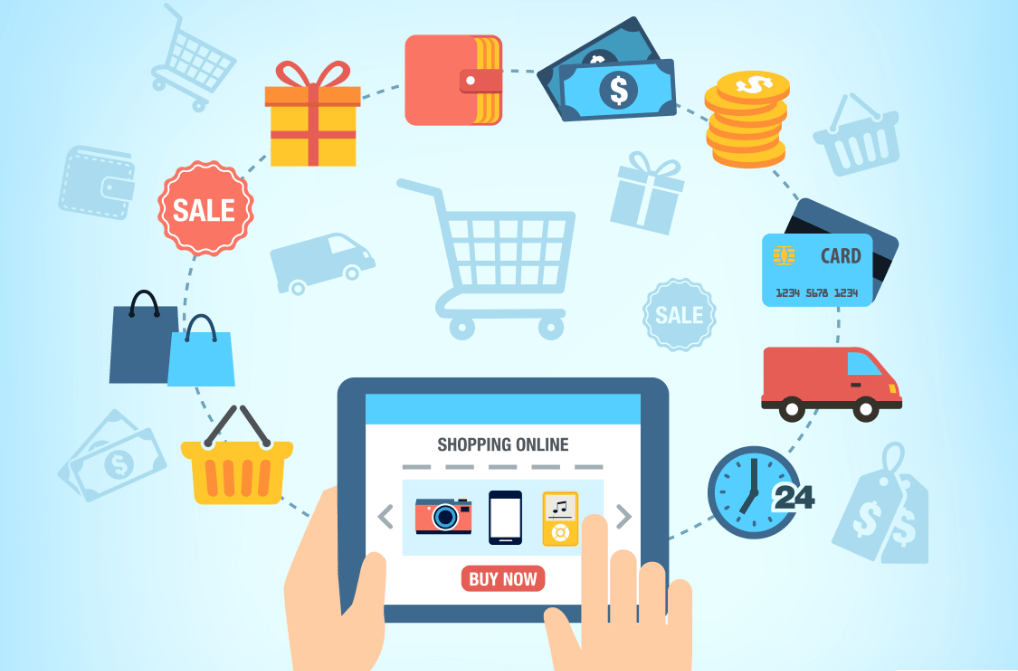The future is hybrid: ways retailers can embrace smart commerce, according to Deloitte

The future is hybrid: ways retailers can embrace smart commerce, according to Deloitte
COVID-19 has affected the retail business and has been a tremendous stimulant for expanding internet commerce in India during the last two years, even attracting new users from non-urban areas. Ecommerce platforms continue to outperform physical purchasing in terms of ease, lower pricing, accessibility, and variety of options.
According to a 2021 Global Payments research, the Indian eCommerce sector is predicted to grow at a rate of 21% annually over the next four years, boosted by an increase in digital adoption during the lockdowns. Retailers who haven’t made technical changes in the last two 1/2 years are falling behind, and the longer they wait to digitise, the further they fall behind.
With the globe seemingly reverting to pre-COVID-19 conditions, a new hybrid commerce model is emerging that blends the power of internet commerce powered by data analytics with offline establishments, ultimately allowing them to function as a physical embodiment of their online experience.
According to Deloitte’s latest ‘Sm@rt Commerce’ report, which outlines strategies for retailers, businesses must realise the benefits of eCommerce beyond its ability to reach a wider audience and investigate how data gathered from being an online player can be used to serve customers better and optimise supply chains.
Startups vs legacy brands
Legacy firms must combine their tech and IT and ultimately look at a more platform-as-a-business strategy to compete with their startup rivals, according to Anand Ramanathan, Partner, Customer and Marketing at Deloitte, who has spent five years with the firm.
He claims Lenskart was able to beat out competition from established companies like Titan Eye because it was able to take data obtained online and apply it offline.
When it comes to product creation, he draws an interesting analogy between startups and legacy enterprises.
“Startups go from one to ten in three months to develop and release new goods. They work on ten goods for three months and then release them as quickly as possible, fully anticipating seven of them to fail. Legacy enterprises, on the other hand, require three years to generate ten goods they’re confident in — and even then, there are failures, albeit fewer. Even yet, by the time a legacy company reaches ten items, startups have iterated and failed multiple times, but they’ve also struck the mark several times, “Anand clarifies.

Hybrid model: the answer to optimal retailing?
The hybrid retail model is here to stay, not simply a fad.
We’re discussing the Indian retail business, which has recognised the importance of two-dimensional retailing and is progressively turning its focus to mixed or hybrid retailing.
All of this is because retail enterprises must stay up with the hyper-competitive and constantly changing retail scene, in which digital and physical commerce are merging.
According to current trends, the hybrid approach, also known as the “Marketplace Model,” is undermining traditional brick-and-mortar and internet shopping as stand-alone firms.
Even the major companies in the Indian e-commerce business, Snapdeal and Flipkart, have begun to open offline storefronts in many cities. The goal is to build trust and a large customer base.
Due to an increase in point-of-transactions and consumers obtaining the experience of online and physical purchases, this hybrid retail model may be effective in India. Despite the enormous development potential, some grey areas may need to be addressed.
Packaging, timeliness, logistics, and swift reversals are just a few domains. We’ll try to share some crucial insights about hybrid retailing and its benefits in this article.
Hybrid Retailing Can be Diverse
It is undeniable that the FMCG sector has enormous potential to expand and influence the retail landscape in the future. Together with Kirana stores, online grocery stores are expected to account for up to 90% of FMCG sales in the near future. Following the lead of the FMCG industry, other retail businesses are increasingly transitioning to a hybrid model. For example, furniture and home products e-commerce enterprises like Pepperfry have recently opened offline retail locations in several shopping malls.
Consumers have more options than ever before in today’s digital world. They can use their cellphones or tablets to peruse online retail inventory while on the go. In this context, selecting a product online and inspecting it in person might provide buyers with much-needed assurance regarding a brand’s legitimacy. That is why omnichannel retailing is the way of the future.
Hybrid Mode’s Key Benefits
- Sales have increased despite a reduction in the marketing budget.
Because the online retail business has become so competitive, eTailers must invest in many forms of advertising and hold events to attract customers. These will be added to the ongoing expenses.
On the other hand, a physical store comes with a monthly maintenance fee. On the other hand, the market budget may be reduced as a result of lower advertising costs.
For example, Firstcry, an online retailer of children’s and newborn supplies, claims that opening storefronts have allowed them to reduce its marketing budget by 25%.
A retail organisation can achieve the best balance by combining online and offline store inventory.
- Touch and Feel When Buying Products by Consumers
Etailers have learned that giving consumers with a “touch and feel” purchasing experience is critical to exploring the untapped e-commerce market fully.
With this in mind, major online merchants are opening brick-and-mortar locations. Even large companies like Tata are adopting an omnichannel strategy. The difference between online and physical selling has been increasingly blurred due to this.
- Enables Better Capacity Planning
Keeping track of inventories is a never-ending challenge. Customers nowadays expect a wide selection of things from which to pick. Customers who bought something online but want to return to the store return in huge numbers due to dissatisfaction with the product. Even the most sophisticated planning and forecasting technologies can’t always balance inventory. To meet client demand, retailers must carefully develop, buy, or acquire new distribution centres in this scenario. Retailers should consider the entire labour impact and study their past sales data to build the proper capacity.

The impact of COVID-19 on the retail industry and the next actions to be taken
1. How COVID-19 changed the retail industry’s external environment
Changes in the external environment surrounding the retail industry have shifted conventional wisdom. They may even create a new structure and circumstances (a “new normal”), with far-reaching implications for politics, the economy, our lifestyles, and the digital technologies that support them. Essential retail businesses that handle food and daily essentials obtained a business continuity request from the government after the Japanese government declared a state of emergency. At the same time, many other types of retail businesses were compelled to close. The economic effects have been so severe that some predict it will take two years to recover.
The retail industry has been hit particularly hard since the government ordered people to quarantine themselves, substantially limiting face-to-face service in stores. As customers, our lifestyles have been forced to adapt dramatically. Because many people would rather stay at home than go shopping, online shopping grew in popularity among those who had never used it before. And, as a result of the shift in workstyles caused by people being forced to work from home, life is increasingly lived through internet channels. The digital technology that enables the online lifestyle has been popular for a long time, but its popularity has skyrocketed since the virus broke out.
2. Impact on the retail industry of drastic changes in the external environment
COVID-19’s severe alterations in the external environment have had many consequences on the retail industry. The crisis has shown stark differences in company performance among different types of operations.
Retail businesses that handle food and daily necessities, like supermarkets, drug stores, and convenience stores (excluding stores located in office districts), have remained in good shape due to the government’s request for essential business continuity, as consumers queue for hours at cash registers to buy products, many of which have sold out. On the other side, sellers of non-essential shopping products and luxury items, like garments and home appliances, have remained stagnant.
Following that, we’d like to concentrate on the modifications in retail business procedures that were influenced by COVID-19. Some instances of swift action taken in retail enterprises handling food and daily essentials include the installation of floor labels to designate proper social distancing positions for consumers waiting in check-out lines.
Employees were protected by vinyl drapes put at cashier check-out desks. In addition, in response to customer demand for safety, procedures like disinfecting shopping carts and individually wrapping products to prevent droplet contamination have been added to daily routines, adding to employee fatigue. Customers were enticed to adopt electronic commerce (EC) by placing orders online for pick-up in-store.
The goal was to spread out in-store client visits. However, the pre-order systems’ capacity was insufficient to achieve the desired result.
Meanwhile, corporate headquarters had to act quickly to maintain company continuity while responding to the abrupt change to remote workstyles. They had to make changes like giving their staff permission to use corporate computers at home and arranging for paper papers to be taken off the premises. Another example is the personnel rotation methods they developed. One of the retail industry characteristics is that while stores are entirely operational, the headquarters that support them must also be fully operational, forcing them to make significant adjustments to their traditional working ways.
Furthermore, because they could not obtain consistent supplies of products from business partners, businesses were forced to devise new procedures to deal with stockouts, like limiting purchases to one per client for specific products.
As a result, business processes across the retail industry have been impacted and have been coping with these countermeasures for several months.
3. Possible future trends in the retail industry
What is the retail industry’s current strategy for responding to these environmental shifts?
First, the retail business will be expected to respond to changes in consumer behaviour and the government’s supported “new behaviour patterns” involving social distancing and contactless contacts. As the trend toward the online-merge-offline (OMO) model develops, physical retailers’ new function is expected to include integration with the online shopping process.
It is critical to create a safe environment for store operations, not just for customers but also for personnel, to work without fear. Stores will have to come up with whole new layouts and retail operations to suit the new behaviour patterns, which will eventually be the factor that separates stores as progress toward delivering contactless services and attaining social distancing continues. In the retail industry, where labour scarcity is projected to persist in the future, responding successfully to relevant consumer and employee expectations will boost employee loyalty.
Human resource acquisition methods are also likely to evolve. Furthermore, staff sharing, which has become a hot topic in the sector, will almost certainly continue to be explored.
Major changes will be made to the office headquarters that support the outlets. The penetration of remote work and digitisation (digital transformation), which have tended to be relatively minor trends in present labour-intensive enterprises, will most certainly accelerate. Retail managers and corporate headquarters will continue to be examined and questioned on the new store management and operational structure strategies they use.
Business partners should be brought closer together as well. Company continuity planning (BCP) will be discussed frequently with business partners to keep the business functioning as a vital lifeline. There will also be a tendency toward reciprocal evaluation of each other’s value as partners, allowing them to do business together in the future.

3 Trends Shaping The Future of Retail
As more countries relax pandemic restrictions, merchants closely watch how to store reopenings affect consumer behaviour. One of the most pressing questions is if consumers would continue to shop online on the same scale as before the outbreak.
Amazon Prime Day, a worldwide e-commerce barometer, saw continued year-over-year growth in online sales this year. With the development of brick-and-mortar locations, some online merchants, like the beauty brand Glossier, are ready for consumers to return to in-person shopping experiences.
Here are three market trends to watch as more retailers leverage digital innovation and cloud-based business models to adapt to changing competition and consumer behaviour in the post-pandemic experience economy.
1. Retail Seasons Have Become Fluid
The last year pushed retailers to rethink their strategies. After the coronavirus pandemic put an unprecedented strain on Amazon’s warehouses and delivery networks in 2020, the business moved to October’s annual July shopping holiday. They were able to better coordinate supply chains and transportation capacity with the surge of internet buying during the epidemic because of the later deadline.
This year, Amazon timed its sales event a month earlier to coincide with the reopening of some markets, including the United States. Amazon isn’t the only store that has changed its mind. The world’s greatest shopping event, Alibaba’s Singles Day, spanned eleven days in 2020, establishing a new record with $115 billion in sales.
It’s not easy to change dates for large-scale sales events. To match capacity with demand, merchants used to need more time to organise production and logistics with supply chain partners. When demand increased, several industries faced a supply shortage. The global chip shortage, for example, has an influence on a variety of consumer items, including computers and phones. Furthermore, distribution partners like Amazon must expand their warehousing and shipping networks to keep their promise of fast delivery to customers.
Companies’ ability to respond to market demand and adjust supply chains has improved because of cloud technology and automation. Companies that use cloud platforms, according to McKinsey, can bring new capabilities to market 20 to 40% faster and scalability is more efficient.
2. More Try-Before-You-Buy
During the last year, retailers have used the cloud to expedite their transition to a more robust, agile, and sustainable, intelligent enterprise. Retailers created and extended their own direct-to-consumer internet shops using cloud-based infrastructure to reduce reliance on physical store sales and increase margins. For the first time, other retailers, including Walmart, Best Buy, and Target, host their own sales events to coincide with Amazon Prime Day and compete with it.
Companies can use intelligent technology and cloud platforms to act faster and take advantage of new ways to communicate with customers, like virtual reality (VR) and augmented reality (AR).
The use of augmented reality and three-dimensional technology to preview purchases is not new, but store closures have elevated it to new heights. As online sales grew, businesses maintained a close eye on returns, which can be expensive and detract from the buying experience. Simultaneously, shoppers were looking for ways to assess how internet products would fit before purchasing.
Virtual “try-before-you-buy” AR experiences can be used on many products and across various platforms, including websites, apps, and social media. Customers may see how a new coffee table or couch changes their living room design, put on sunglasses, mix and match clothing, and discover companies that fit their lifestyle.
For example, Allbirds, a sustainable shoe and apparel brand, has built its own shopping app that allows customers to try on several designs while informing them about the firm’s sustainability goals. Shoppers can vote on where Allbirds should invest in reducing carbon emissions to zero.
3. Building Back Better with Sustainable Retail Experiences
For e-commerce enterprises, the reopening of markets can be a watershed moment. Amazon Prime Day will reveal if consumers who are no longer constrained to online shopping sites will continue to use them at the same level in the future. Providing fantastic online shopping experiences, like try-before-you-buy, speedy shipping, and attentive customer care, is a crucial differentiation.
What’s new is that we’ve reached a tipping point in the retail industry’s transition to a circular business model. It is something that customers desire. According to a recent Accenture survey, 67 per cent of shoppers want to make more environmentally friendly, sustainable, or ethical purchases. Consumers flock to e-commerce sites like thredUP, Depop, Humana, and Thrift+ for secondhand buying and online thrifting.
An increasing number of large retailers are making it their aim to achieve zero emissions and trash reduction through recycling initiatives. This transition to a circular business model is made possible by technological advancements. Retailers may make business activities like procuring materials and ingredients and end-of-life handling more transparent by using digital supply chains connected via the cloud and backed by intelligent technologies.
According to a global study by the MPI Group, companies that run highly resilient supply chains can improve customer experience and satisfaction by more than 82 per cent. The ability to track their environmental, social, and economic impact across the supply chain and entire corporate networks will be a major differentiator in the recovery.
Market changes in the retail industry will continue to be swift and unpredictably unexpected. Still, technological innovation offers a road to more sustainable and resilient business models that offer customers fantastic experiences and responsible choices.

The Future of Shopping: Retail vs E-Commerce
In some form or another, shopping is one of the trademarks of a functional society. It is both necessary and a luxury, cathartic and enjoyable.
While shopping has been around almost as long as history, our purchasing habits are always evolving. Shopping evolves in lockstep with technology, and there appears to be no stop in sight.
Thanks to the millions of options provided by recent technological advancements, the future of shopping are probably more exciting and unclear than ever before. The last decade’s technological advances have completely revolutionised how we live our lives, and the shift in how we purchase is only beginning.
So, what does the future hold for retail? By learning more about retail, e-commerce, and how shopping changed in 2018, we can better understand what the future holds for this popular pastime.
Retail and e-commerce: What’s the difference?
In the most basic sense, retail and e-commerce appear to be highly similar: both refer to what happens when a business sells a product to an individual customer for their own use, except that one is done entirely through the Internet.
Retail can occur in a physical location like a shopping mall or a grocery store, online, through person-to-person transactions, or even through direct mail.
E-commerce, on the other hand, refers to business transactions that are conducted predominantly through the Internet. “Retail e-commerce sales” refers to the sale of goods and services through the Internet, whether through an extranet, Electronic Data Interchange (EDI), or other online systems.
Many retailers today operate somewhere in the middle of brick-and-mortar and e-commerce. Traditional retail, or the shopping experience of going to a specific place to buy a product or service, remains alive and thriving. This most basic kind of shopping will almost certainly continue to exist.
On the other hand, many stores have both a physical location and an internet presence. Consider retailers like Target, Walmart, and Forever 21. You can visit and shop at each location via their online platforms or go to the local store and walk around the physical facility.
While internet shopping is popular and has grown in popularity over time, this does not indicate that physical establishments like shopping malls, grocery stores, and convenience stores are becoming outdated. Both mediums, on the other hand, are still thriving.
The world’s buying habits have evolved, resulting in an ever-changing future as technology advances.

How shopping has already changed: The rise of online shopping
There are already some highly futuristic features of shopping today, which can be seen as the foundation for where shopping is headed in the future.
How we shop now is radically different from how we did twenty or so years ago, thanks to the Internet, apps, commercials, online reviews, brands, and cloud-based software.
In fact, without cloud-based inventory software like Finale Inventory to keep their inventory organised and streamlined, small e-commerce enterprises would struggle to stay viable.
For many buyers, the convenience of internet shopping appeals to them, as does the necessity to obtain particular information before making a purchase.
One of the most noticeable differences is that shoppers are extremely knowledgeable about the products they purchase, which reduces the need for salespeople.
To clarify, shoppers can use their smartphone, laptop, or tablet to look for products and other items online, read reviews, compare prices, locate the nearest store, select the best online retailer, and then purchase.
One of the most changes in shopping in recent years has been the ease of access, with the Internet playing a significant influence on how people search and purchase products.
To take things a step further, shoppers can track shipments, find estimated delivery dates, and even process returns online.
Consumers are more likely to shop online than in physical stores due to promotions, discounts, coupons, and Groupon. Advertisements can be found on your Facebook page, in Google searches, on Instagram, and elsewhere, alerting you to excellent online deals and discounts available only online.
Recommendations, recommendations, and evaluations from friends, family, and followers are also effective ways to find bargains online, making this mode of purchasing one of the most straightforward and efficient. Furthermore, “mobile commerce” is becoming more popular.
While most people use laptops to browse the internet and make purchases, smartphone shopping is becoming increasingly popular.
This is primarily because, for most people, mobile phones are even more accessible than laptop computers. After all, they are always with us, and we are practically always on them.
Furthermore, many businesses and online stores have made their website interfaces mobile-friendly, making shopping online via your smartphone easier than ever before.
These components of online shopping are undoubtedly laying the groundwork for what’s to come, with omnichannel retail being the most imminent new development on the horizon.
Moving forward: Omnichannel retail and beyond
Omnichannel retail is the next natural step for many businesses to grow sales, develop customer connections, and increase revenue. The term “omnichannel retail” refers to a multichannel sales strategy.
Its goal is to provide customers with a painless and straightforward purchase experience, allowing them to shop from anywhere, whether on their laptops, smartphones, tablets, or physical stores.
One appealing feature of the omnichannel design is that customer service agents can recall customers’ preferences and purchases from their last purchasing experience with the company.
This helps the representative have a deeper understanding of the customer and provide items or services tailored to their specific goals and needs.
This data helps lead customers to their next purchase while offering them some liberty, whether online or in person. Customers can check a firm’s shop inventory via the corporate website using their laptops or phones, allowing them the choice to buy in-stock items, save them for later, or buy online and pick them up in-store.
Omnichannel retail has various commercial benefits, provides customers with a say in their personal buying, and demonstrates that they are a valued part of your company’s process. Some examples are:
• Greater Efficiency: Omnichannel retail tactics give consistency in the customer shopping experience across all platforms for both new and returning customers. Because of the central database of items, prices, offers, promotions, and more, a firm can be ready to reply to their consumers’ queries, requirements, and complaints.
• Improved Data Collection: A more tailored client experience is more positive. Treating your consumers as numbers rather than people can quickly backfire, leaving your company impersonal and untrustworthy. When you customise your customer’s experience, you naturally provide better service and increase retention.
• Integration of Data Analysis and Communication: Multiple communication channels give your company access to many information streams, resulting in improved contact with customers, buyers, suppliers, and other stakeholders. Understanding what customers want and need relies heavily on data streams. Analytics collects data streams and makes them understandable so you can grasp, quantify, and review communications and, as a result, improve client connections.
Concluding Remarks
The future of shopping will almost certainly be digital, but that doesn’t imply it will look any different than what we have now. The crucial thing to remember is that no matter how shopping evolves, several aspects will remain constant: data collection and analysis, a personalised relationship with customers, and efficient business management.
edited and proofread by nikita sharma




